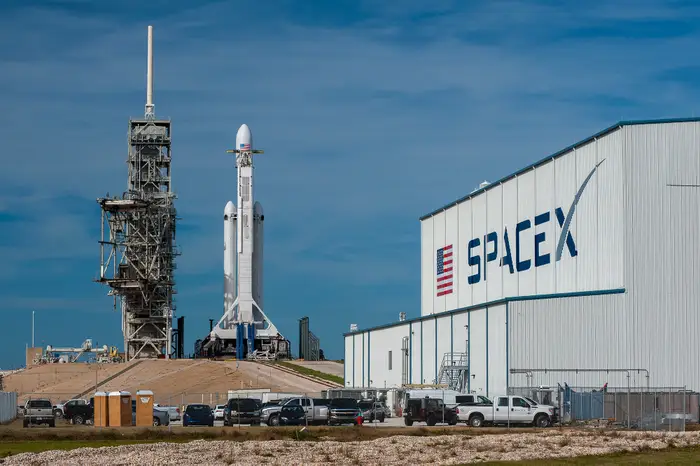After a series of seven test flights of Starship prototypes from August 2020 to May 2021, SpaceX is about to tickle the skies again with its Starship spacecraft. This time he won’t be alone, but styled above his huge booster named Super Heavy. Equipped with thirty-three new generation Raptor engines, the launcher has just reached its launch pad to carry out tests.
A Busy Year in South Texas
Gradually, SpaceX pushed the limits, starting with two 150-meter jumps before moving on to flights reaching nearly 12.5 km. After a few failures, this first test program ended last year with a soft landing of the Starship SN15. By this point, SpaceX had pushed its prototype ship as far as it could go. Indeed, the vehicle did not yet have the capacity to reach orbit on its own. To do this, the company has developed a first stage called “Super Heavy”, as well as the associated ground systems.
In recent months, SpaceX has also taken care of its new baby: the Raptor 2. The original engine was indeed too heavy and lacked performance. For comparison, the former produced 185 tons of thrust, while the latter will produce at least 230. It should also cost half as much to build and be considerably stronger.
All of this work has not been easy. This huge vehicle requiring thirty-three engines, the company had to rethink its production capacities. Aerojet Rocketdyne, the former leader in propulsion in the United States, has set a goal of building four RS-25 engines for NASA’s SLS rocket per year. For its part, SpaceX currently builds at least four of its own engines per week.
A lot of effort has also gone into the development of a huge “launch and capture” tower. Standing over 150 meters tall, the structure will support the fully stacked rocket during refueling and launch operations. Then, a few minutes after launch, it will grab the first stage with huge “wands” as the rocket slows near the ground. The whole design and construction process took about thirteen months.
Finally, in recent months, the company was also dependent on the FAA and its environmental report.
Next crucial tests
For all these reasons, the launch pads of Boca Chica, Texas have been silent for over a year. Now the company can move forward. This Thursday, June 23, the Super Heavy Booster 7 prototype was even moved in order to carry out its first tests. To do this, it was lifted for the first time by the famous “sticks” of the launch tower and placed on its support.
Full Chopstick lift of Booster 7. The first time a Super Heavy has been lifted by Mechazilla.
33 Raptor 2s:https://t.co/ta64s5lm9H pic.twitter.com/QqsgJiFFQP
— Chris Bergin – NSF (@NASASpaceflight) June 24, 2022
If this booster survives pressure testing and potentially a static firing test in the days and weeks to come, it could be requisitioned to perform the Starship’s first orbital test flight. Elon Musk recently said he thinks a launch attempt could happen in July.



